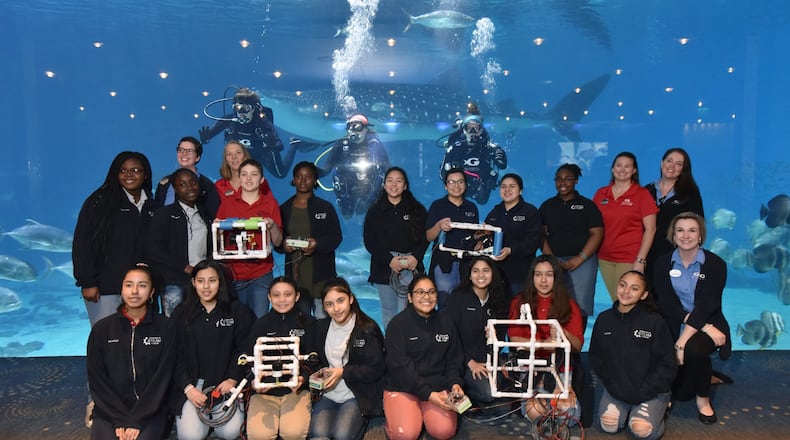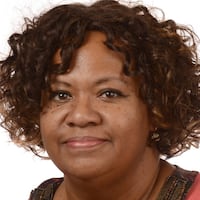For the second year in a row, 16 middle school girls spent their spring break learning how science and engineering can be a part of their futures.
In a camp at the Georgia Aquarium, they built remotely operated vehicles, “drones” of sorts, that would “fly” underwater.
The Girls Underwater ROV STEM Camp, funded by Motorola Solutions Foundation, seeks to change the statistics that show women still lag far behind men in science, technology, engineering and math. Women earn 58 percent of all bachelor’s degrees, but only 36 percent of bachelor’s degrees are in those fields. While women occupy 60 percent of social science jobs and 48 percent of those in life sciences, they represent only 26 percent in computer and mathematical science and only 13 percent of engineers, according to the National Science Foundation.
And those numbers could decrease in the next decade, according to Girls Who Code, which estimates that just 22 percent of computer scientists will be women in 2027, down from 37 percent in 1995.
Last year Motorola wanted to provide a grant for a small group of girls in the Lawrenceville area to be exposed to more engineering opportunities. Sweetwater was chosen as the school, and J. Antoine Shade believes its academy for science, technology, engineering, arts and math helped with that.
The academy he coordinates is now in its third year.
“We have our own uniform and our own identity,” he said adding that participation is 97% minority and 50% female. “Right now we have 172 students and we’re on target for 256 students next year.
“This is such an incredible opportunity for the girls to learn not just about engineering, but effective collaboration, problem-solving and building self-esteem,” Shade said of the Aquarium camp.
The fist-bumps and cheers echoing through the room as mechanical problems and design flaws were quickly worked out were proof of that.
Each group of four girls used PVC pipe, pre-fabricated motors and other materials to make their vehicles. They were only limited by their imaginations and the pile of materials on the tables.
“We pretty much used every skill we learned in class to do this,” said eighth-grader Yolibeth Contrenas. She had been at the inaugural camp last year and knew what to expect.
As eighth-grader Natanaelle Durand explained the practical purposes for the remote-controlled vehicle, the other three girls in her group excitedly chimed in, nodding approval. “We could use it to encounter new species,” Durand said.
“Or find pockets of pollution to help clean up the ocean,” said Fernanda Sanchez-Quiroz, another eighth-grader.
Aline Lopez, a seventh-grader, agreed but added that they’d need to study biology, advanced math such as physics and perhaps even psychology for that field.
When asked if the program had made them consider fields in science, all heads nodded.
“And it’s good to be in a camp like this where we are all working together,” said Yolibeth. “Now I know girls who have done this with me and we can support each other.”
Math teacher Kareem Clarke was along for supervision, but he said the implementation was done completely by students.
“This is Geometry 101,” he said pointing to the cube-shaped rover. “They had to understand how to keep their design stable so it wouldn’t topple over or spin in circles when they added the motors.”
He said the academy adds math and science influences to social studies, language arts and every other subject.
The girls will take their completed robot vehicles back to the school where they can be disassembled and rebuilt. Teachers will be able to include that technology in middle and high school curricula tied to state standards.
STEM and STEAM school characteristics
There are 71 STEM and STEAM schools throughout Georgia and countless programs within schools based on science, technology, engineering and math; STEAM (A for arts) adds a fine arts component. The Georgia Department of Education has set guidelines for STEM- and STEAM-based education, such as:
• Students must be able to apply content from multiple disciplines to answer complex questions and develop solutions to real-world problems.
• Students can analyze and articulate interdisciplinary connections with math, science and fine arts content.
• Partners are involved in the development of curriculum and assist in making connections between classroom teaching and learning and business and industry applications.
Information: stemgeorgia.org
Source: Georgia Department of Education
About the Author
The Latest
Featured

